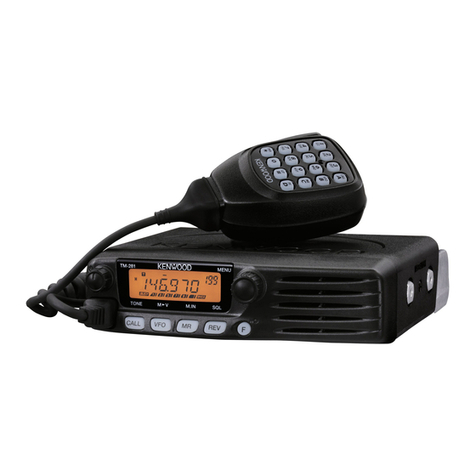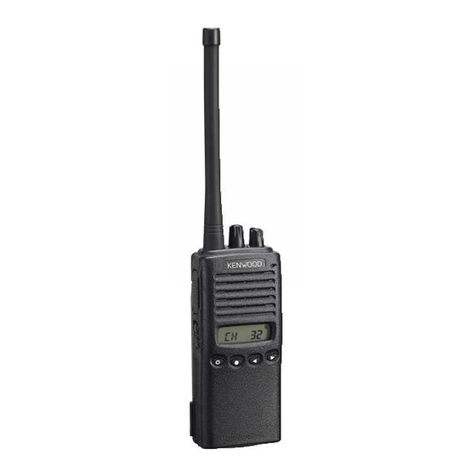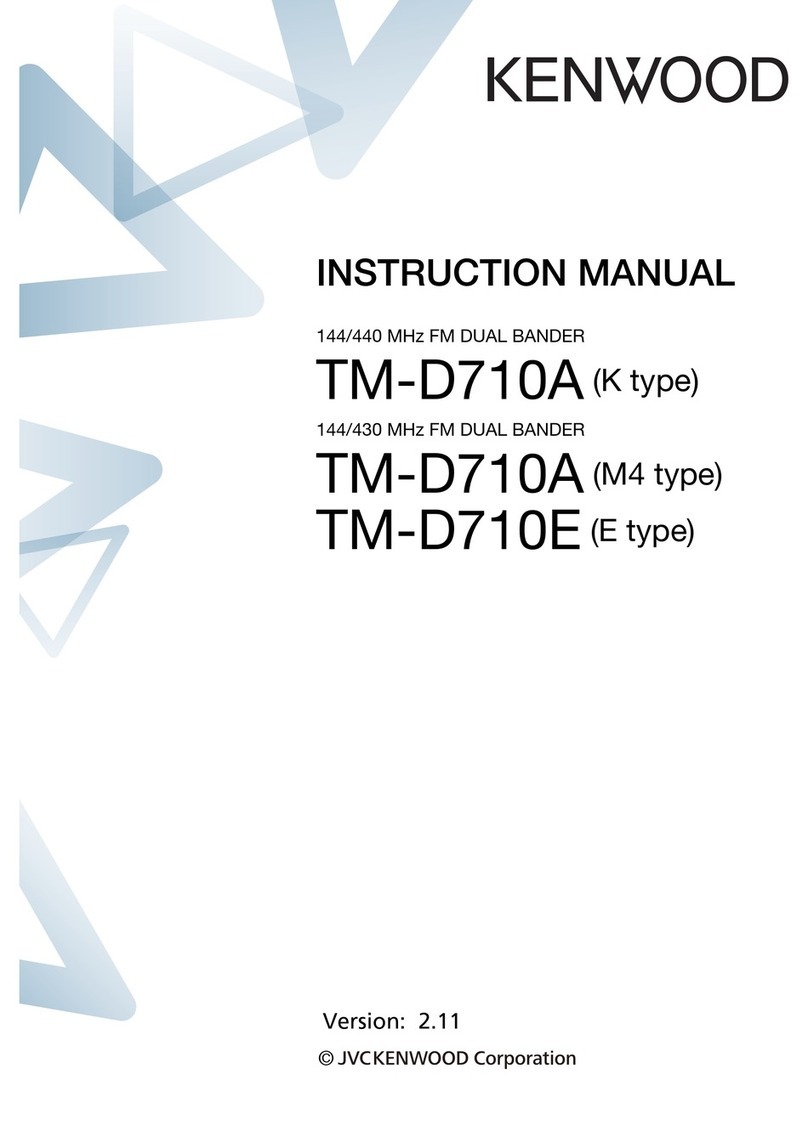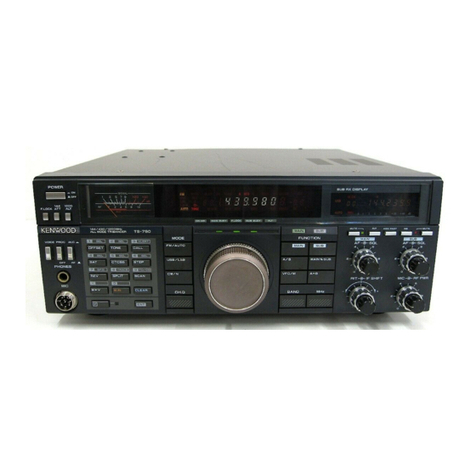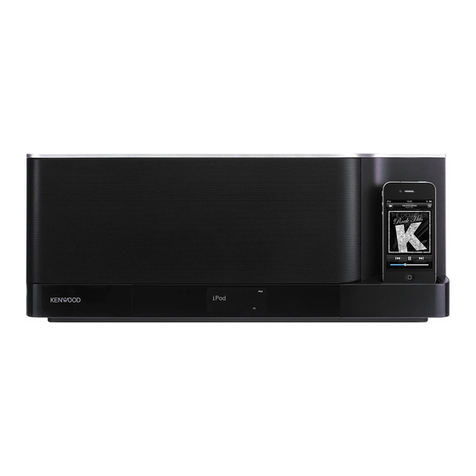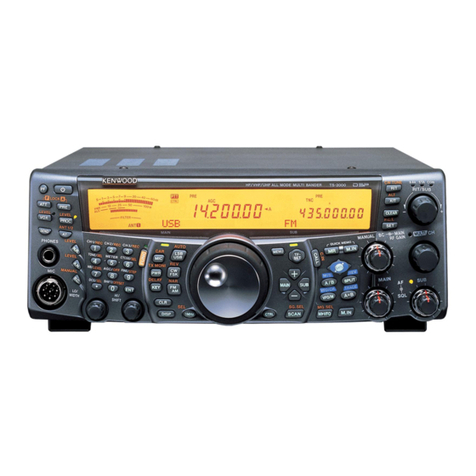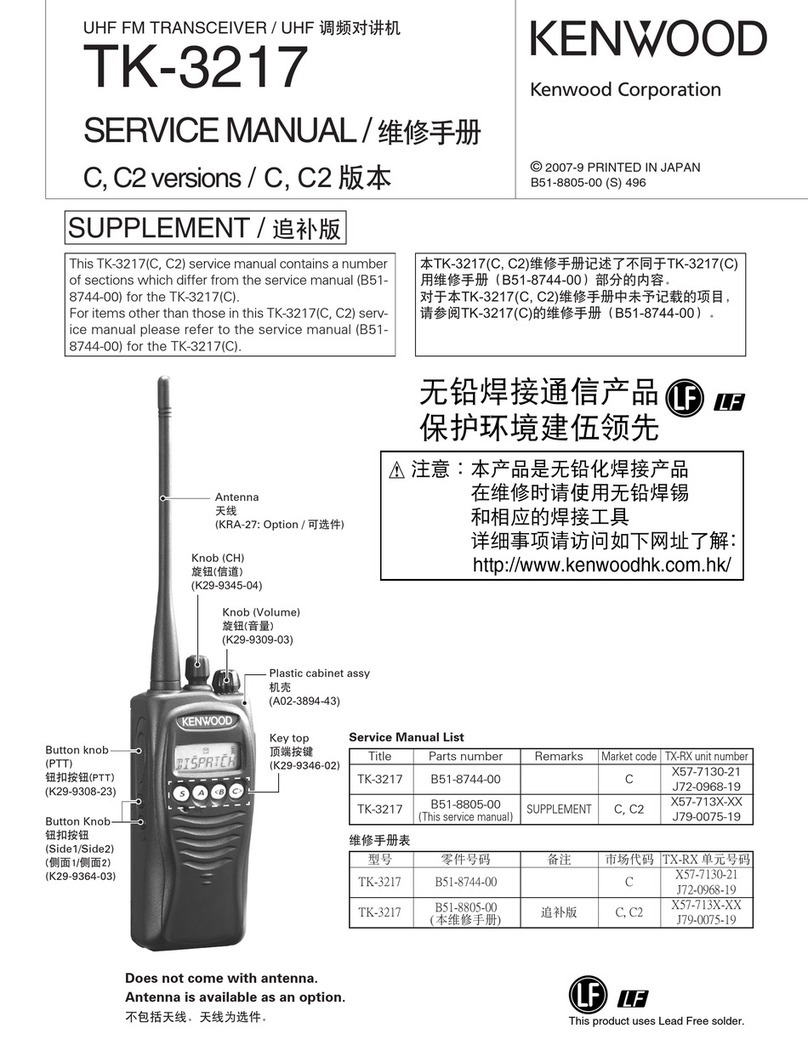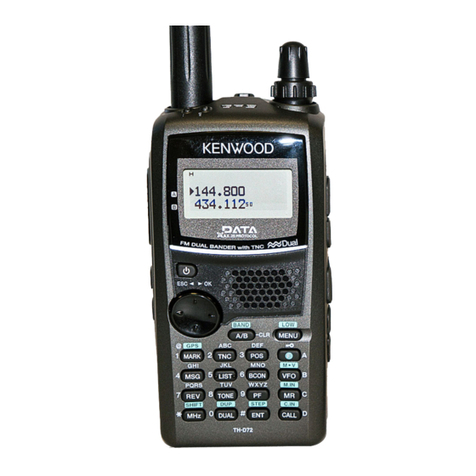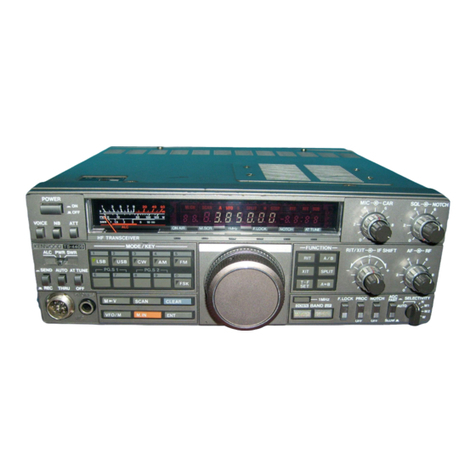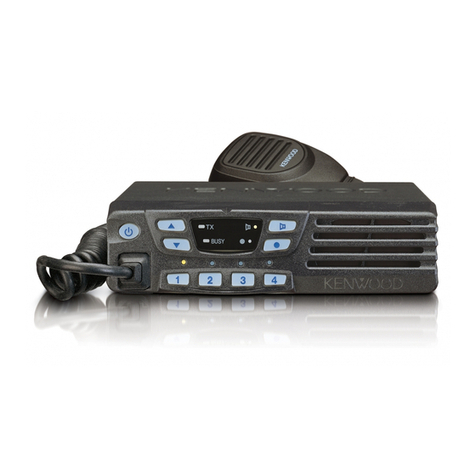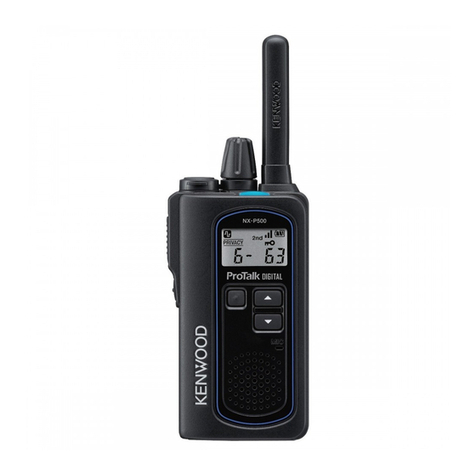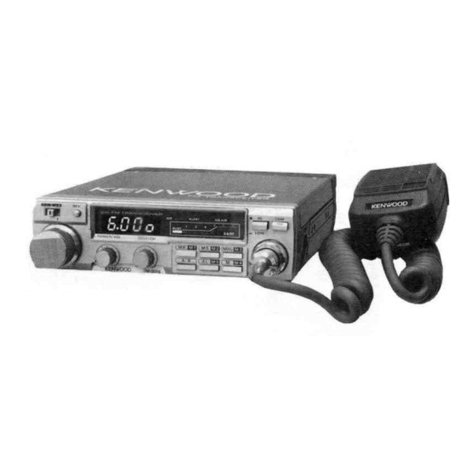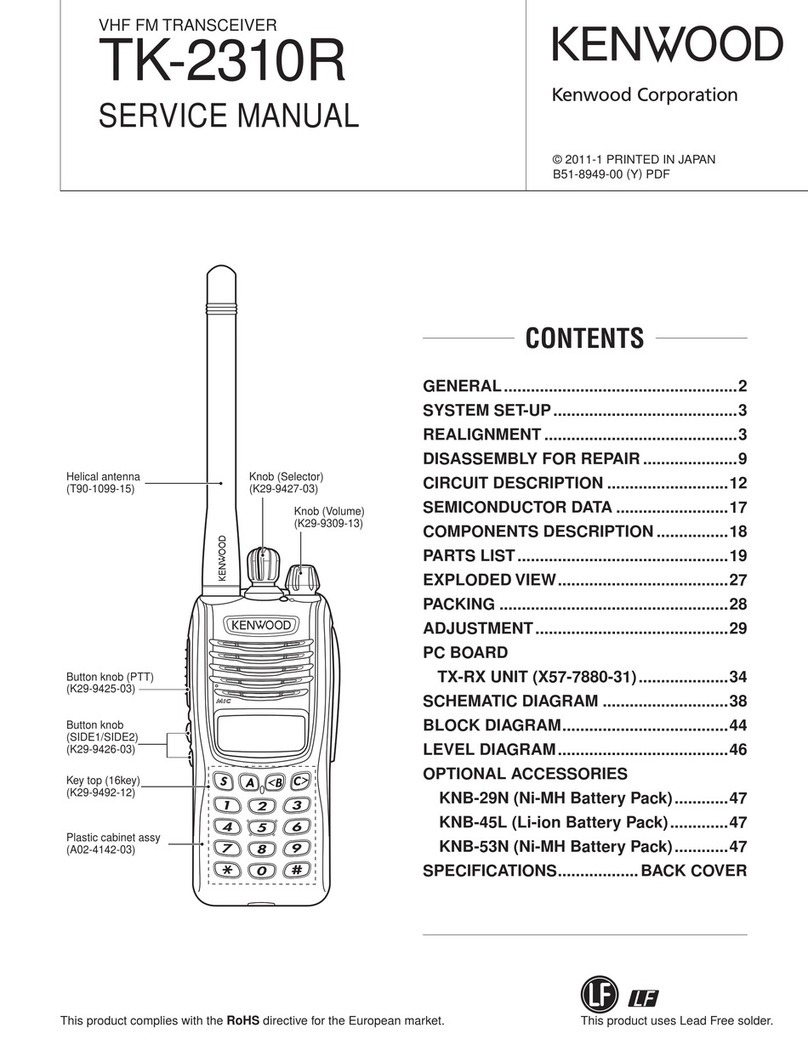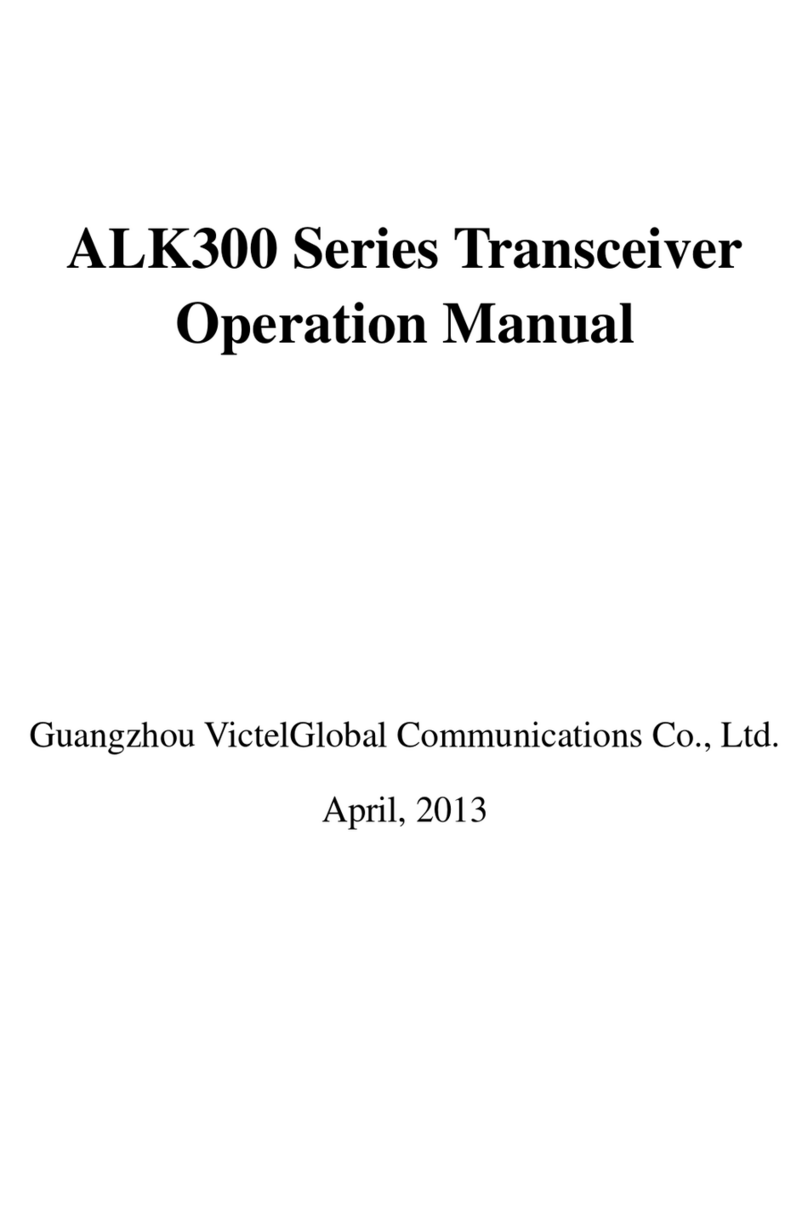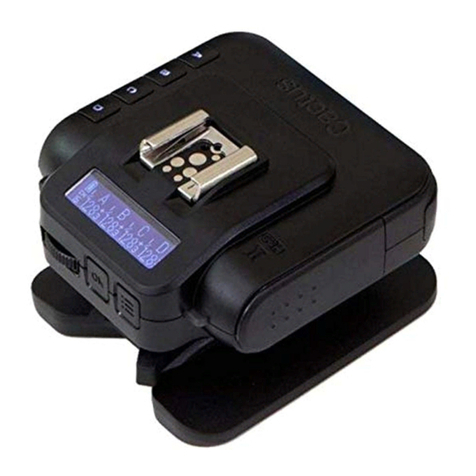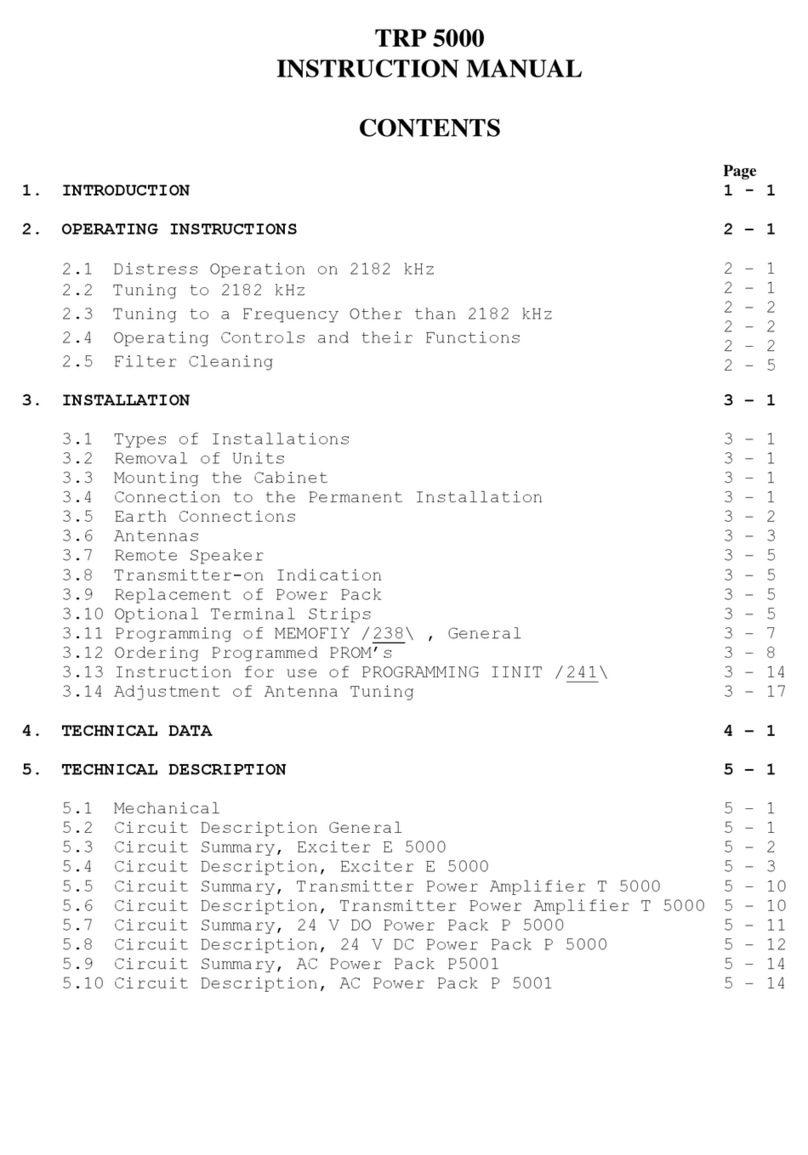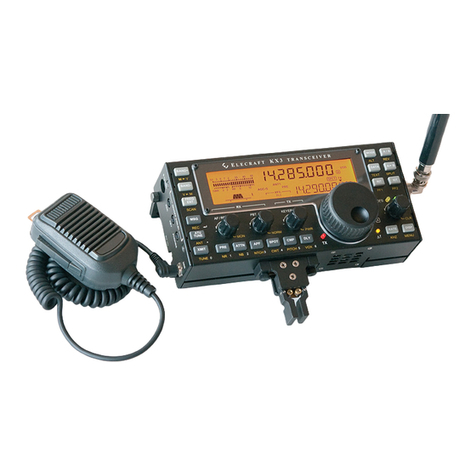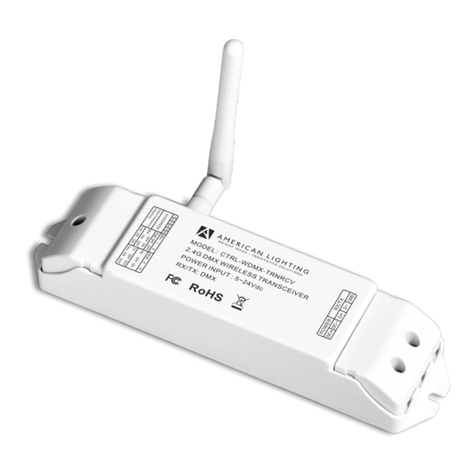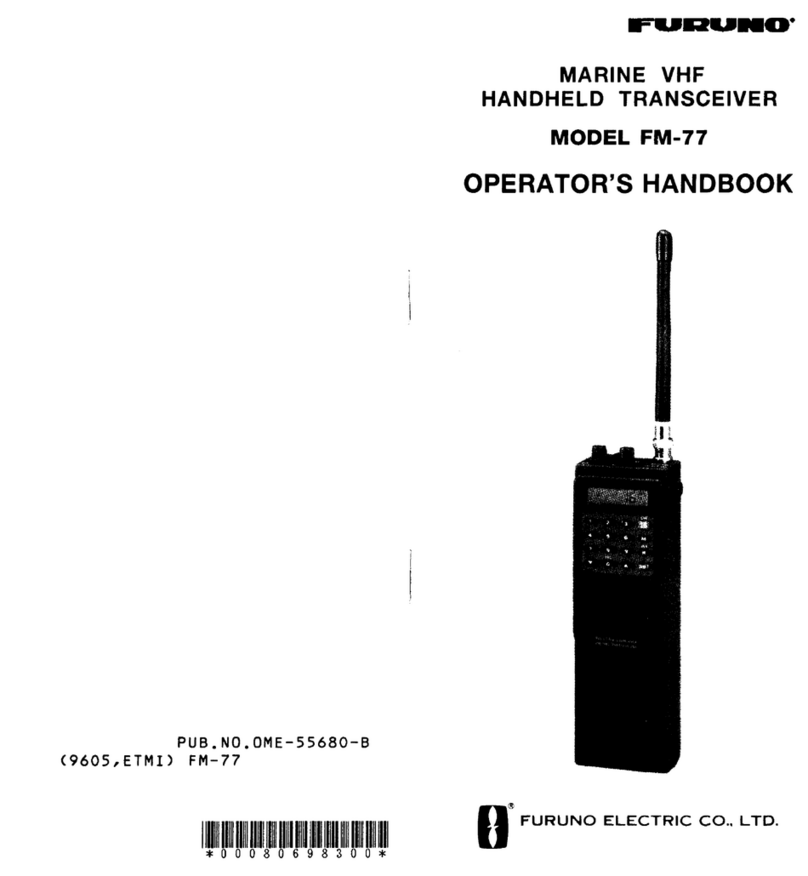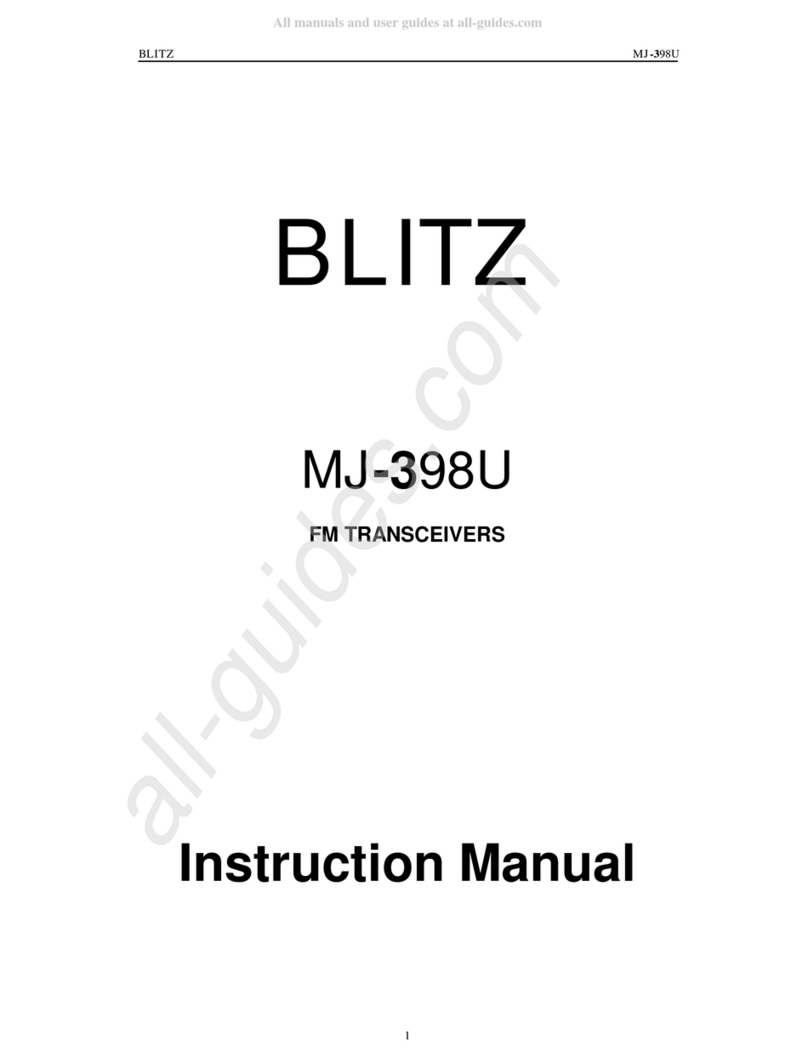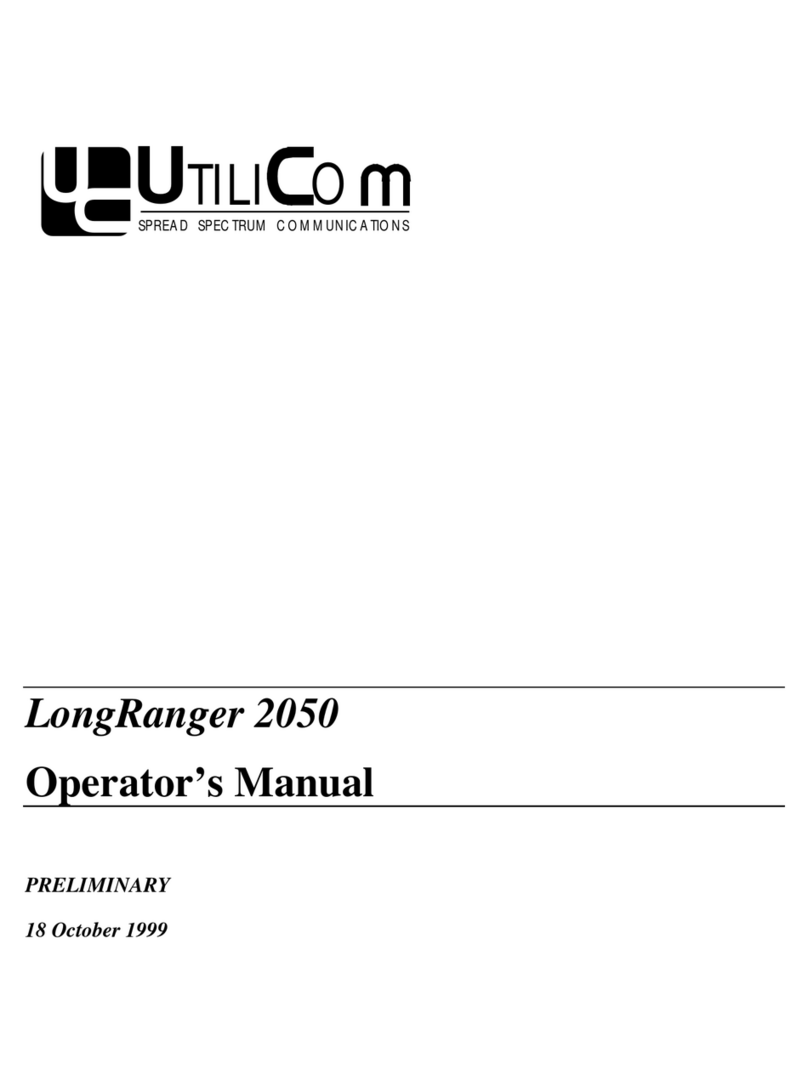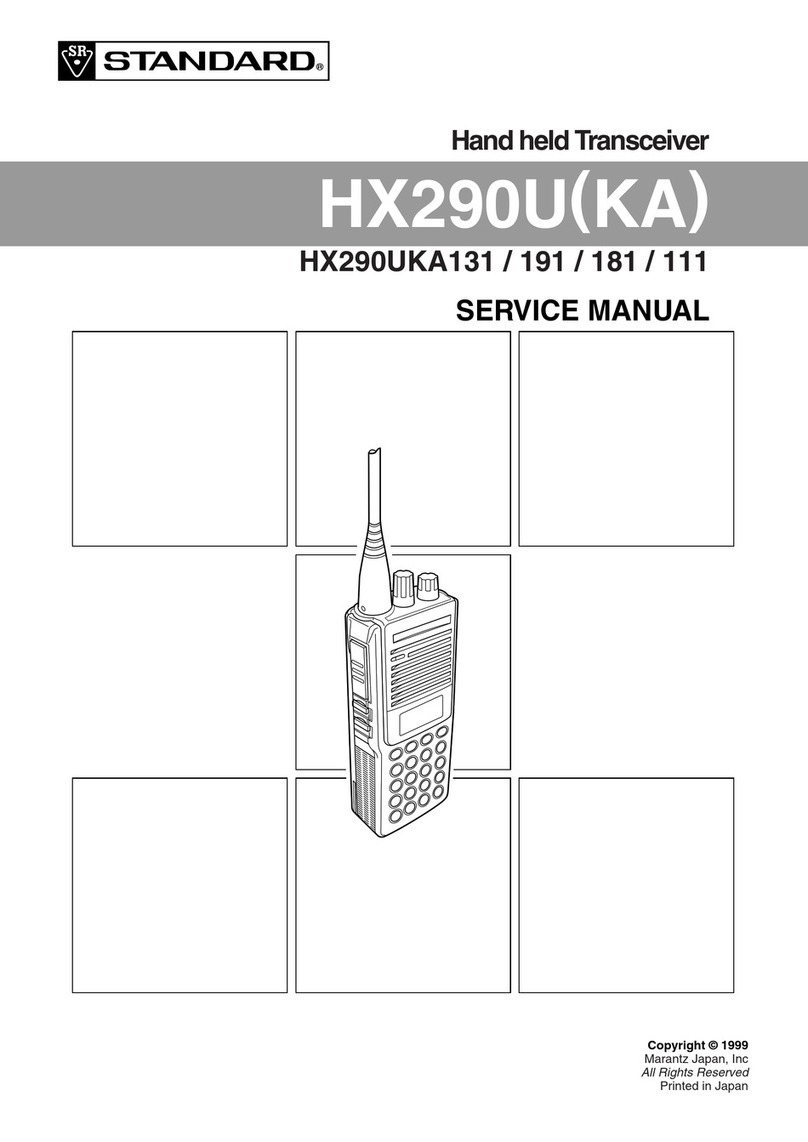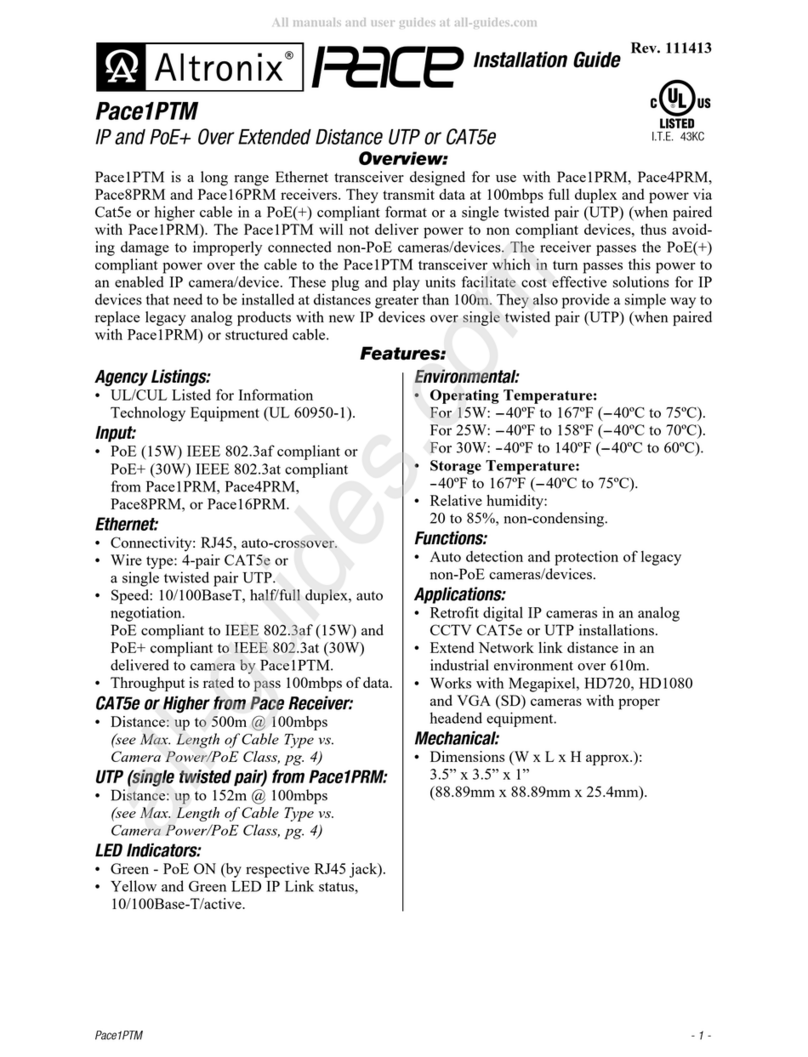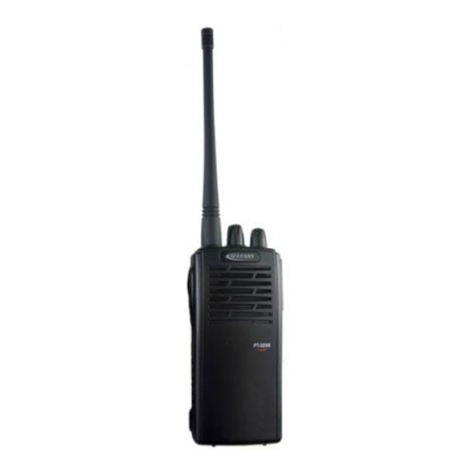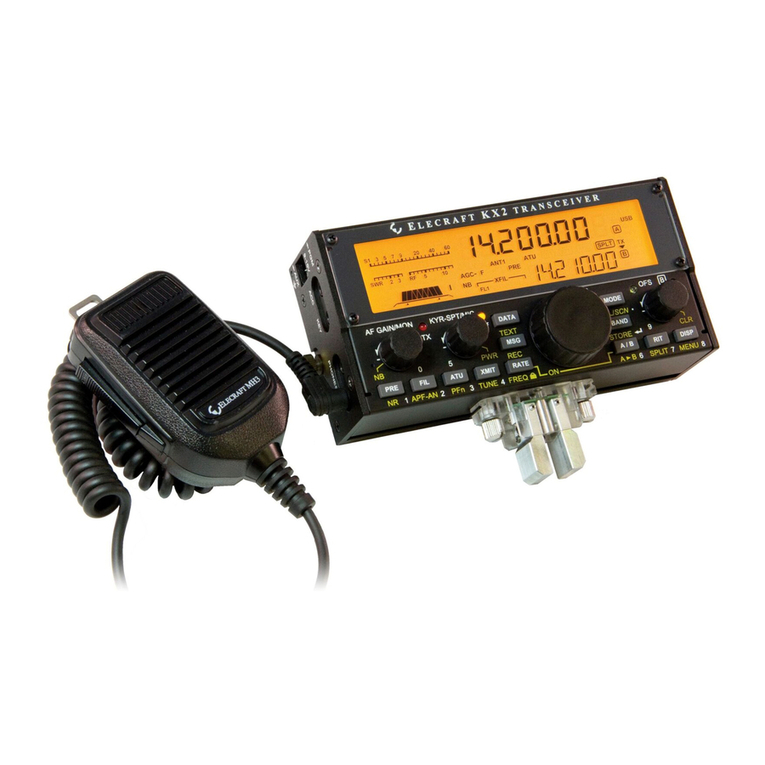
TK-2302/2302(V)/2306
9
1. Frequency Configuration
The receiver utilizes double conversion. The first IF is
38.85MHz and the second IF is 450kHz. The first local oscil-
lator signal is supplied from the PLL circuit.
The PLL circuit in the transmitter generates the neces-
sary frequencies. Fig. 1 shows the frequencies.
ANT
TX/RX : 136~174MHz
ANT
SW
RF
AMP
TX
AMP
RF
AMP
1st MIX MCF
38.85MHz
CF
450kHz
IF
SYSTEM
AF
AMP
SP
RX:
174.85~
212.85MHz
PLL
VCO
MIC
AMP
MIC
TX: 136~174MHz
38.4MHz
X3
multiply TCXO 12.8MHz
1/2
Fig. 1 Frequency configuration
2. Receiver
The frequency configuration of the receiver is shown in
Fig. 2.
ANT
ANT
SW
BPF
RCTV
RF AMP
Q204
MIXER
Q203
IF AMP
Q202
BPF
PCTV 1st Local
MCF
XF201
IC201
IF, MIX, DET
IC308
AQUA-L
Q2
X3 multiply
X1
TXCO
CF201
2nd Local 12.8MHz
AF VOL
IC309
AF PA SP
Fig. 2 Receiver sectio
■Front End (RF AMP)
The signal coming from the antenna passes through the
transmit/receive switching diode circuit, (D103, D104 and
D105) passes through a BPF (L214, L216 and L213), and is
amplified by the RF amplifier (Q204).
The resulting signal passes through a BPF (L209 and
L211) and goes to the mixer. These BPFs are adjusted by
variable capacitors (D203, D204, D205 and D202). The input
voltage to the variable capacitor is regulated by voltage out-
put from the MCU (IC306).
CIRCUIT DESCRIPTION
■First Mixer
The signal from the front end is mixed with the first local
oscillator signal generated in the PLL circuit by Q203 to pro-
duce a first IF frequency of 38.85MHz.
The resulting signal passes through the XF201 MCF to
cut the adjacent spurious and provide the opitimun charac-
teristics, such as adjacent frequency selectivity.
■IF Amplifier Circuit
The first IF signal is passed through a four-pole monolithic
crystal filter (XF201) to remove the adjacent channel signal.
The filtered first IF signal is amplified by the first IF ampli-
fier (Q202) and then applied to the lF system IC (IC201).
The IF system IC provides a second mixer, limiting amplifier,
quadrature detector and RSSI (Received Signal Strength In-
dicator). The second mixer mixes the first IF signal with the
38.4MHz of the second local oscillator output (TCXO X1 and
Q2) and produces the second IF signal of 450kHz.
The second IF signal is passed through the ceramic filter
(CF201) to remove the adjacent channel signal. The filtered
second IF signal is amplified by the limiting amplifier and
demodulated by the quadrature detector with the ceramic
discriminator (CD201). The demodulated signal is routed to
the audio circuit.
■Wide/Narrow Switching Circuit
Narrow and Wide settings can be made for each channel
by switching the demodulation level.
The WIDE (low level) and NARROW (high level) data is
output from IC306, pin 5. When a WIDE (low level) data is
received, Q201 turn on. When a NARROW (high level) data
is received, Q201 turn off.
Q201 turns on/off with the Wide/Narrow data and the
IC201 detector output level is switched to maintain a con-
stant output level during wide or narrow signals.
Q201
R209
R210
C209
CD201
QUAD IFOUT
IC201
FM IF SYSTEM
W/N
(IC306) L : Wide
H: Narrow
AFOUT Q202
5R
Fig. 3 Wide/Narrow switching circuit
■Audio Amplifier Circuit
The demodulated signal from IC201 goes to AF amplifier
through IC308.
The signal then goes through an AF volume control , and
is routed to an audio power amplifier (IC309) where it is am-
plified and output to the speaker.
